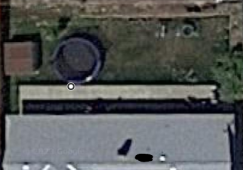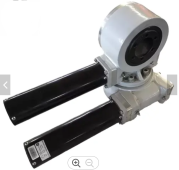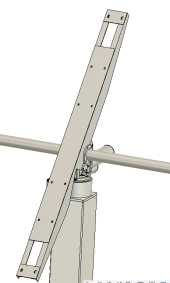400bird
Solar Wizard
I want to start by saying that I realize I will never recoup the money spent on this tracker. I don't need any reminders.
Electronics and solar are my hobby. The tracker was the 11 year old's idea and he wants to help!
Anyways on to the meat and potatoes!
We're looking at a 2 axis tracker on top of a pole with 2- 480 watt panes. The array will be roughly 6' x 6'
The first conundrum is how tall should the mount/pole be?
We live in a suburb, so this is going in the back yard, near the house.
House faces south, backyard on the north.
That means the sun rises over the house, and figuring out the height of the pole leaves more variables outside of my math skills than I like.
There's the measurements I am stuck with:
Roof ridge 14' tall
Tracker mount will be 26 north of the peak.
Latitude 37.7595 puts the lowest sun at an elevation of 28.8° on Dec 21st.
Here's the backyard layout, up is north. The dot is the approximate tracker location. The roof ridge runs east/west at the bottom of the image.

Once I have the pole height figured out, this is the tracking mechanism we plan to use:

Control program is in process, will be run on an Arduino (or Raspberry Pi, but that seems like overkill this far)
Electronics and solar are my hobby. The tracker was the 11 year old's idea and he wants to help!
Anyways on to the meat and potatoes!
We're looking at a 2 axis tracker on top of a pole with 2- 480 watt panes. The array will be roughly 6' x 6'
The first conundrum is how tall should the mount/pole be?
We live in a suburb, so this is going in the back yard, near the house.
House faces south, backyard on the north.
That means the sun rises over the house, and figuring out the height of the pole leaves more variables outside of my math skills than I like.
There's the measurements I am stuck with:
Roof ridge 14' tall
Tracker mount will be 26 north of the peak.
Latitude 37.7595 puts the lowest sun at an elevation of 28.8° on Dec 21st.
Here's the backyard layout, up is north. The dot is the approximate tracker location. The roof ridge runs east/west at the bottom of the image.

Once I have the pole height figured out, this is the tracking mechanism we plan to use:

Control program is in process, will be run on an Arduino (or Raspberry Pi, but that seems like overkill this far)
Last edited:







